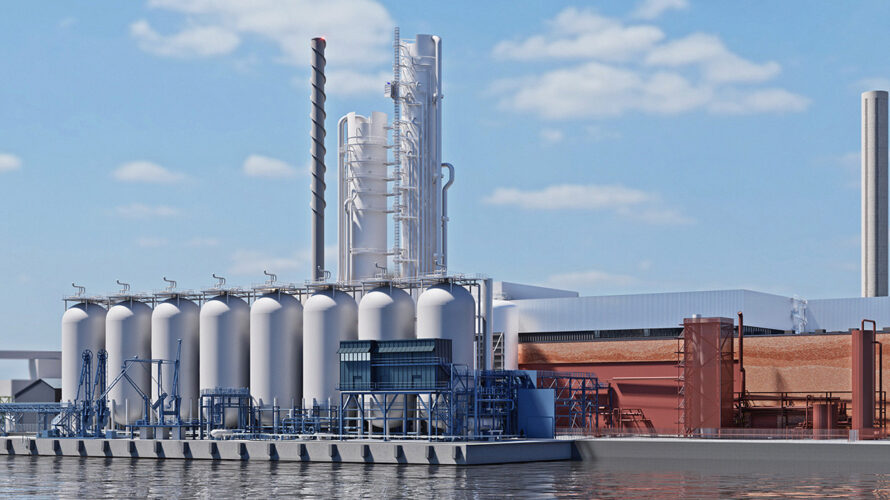15.48 million tonnes of durable carbon removal were sold in Q2 2025. Did you know that the majority of these contracted volumes (89.6%) were for BECCS (bioenergy with carbon capture and storage) projects?
In this blog, we’re going to set out to explore why.
Along the way, we will cover the following :
- What is BECCS?
- What about BECCS as a project type is standing out to buyers?
- The drawbacks of BECCS projects
- What can we expect from BECCS projects in the future
- Some of the top BECCS sellers in the Carbon Markets
What is BECCS?
BECCS stands for bioenergy with carbon capture and storage. At its core, it involves burning biomass to generate energy. Then, instead of letting the carbon dioxide emissions from that combust into the atmosphere, BECCS captures it and permanently stores it underground in geological formations.
Some of the source organic materials can include agricultural, forestry, some industrial, and municipal wastes.
During the carbon capture process, the carbon dioxide is isolated, pressurized, turned into a liquid state, and placed into a pipeline. From there, it is often stored into porous rock formations on land or sea. These utilised rock formations can take form in systems like depleted petroleum reservoirs, saline aquifers, and more.

What about BECCS is standing out to buyers?
It’s clear BECCS is an appealing project type and that’s because it can be highly controlled, work at scale to provide a large amount of carbon credits, and deliver valuable co-benefits. It’s considered to be a highly-permanent and reliable carbon credit project type.
Even at an average of $348 per tonne, BECCS has commanded a lot of buyer attention within the durable CDR space.
Eco-friendly overall
This might be one of the biggest differentiators around this project type. BECCS is very green overall for a durable removal project type. Before even introducing carbon capture into their operations, these energy plants are providing clean energy in a way that is inherently carbon neutral.
The nature of BECCS also helps companies and organizations achieve broader climate goals, like electrification. BECCS can help decarbonise heavy industries by replacing carbon-intensive fossil fuels over time. The utilization of biomass also helps with waste management.
The fact that BECCS projects are intrinsically sustainable makes it feel like less of a risky investment that can backfire on the buyer. Investment in them supports both clean energy development and durable carbon capture.
Provides a more durable form of sustainable energy
BECCS is a reliable source of energy. This form of energy can help provide electricity that is less dependent on weather conditions unlike other eco-friendly solutions like wind and solar, for example.
Wind and solar energy can easily be disrupted by major climate events (that are only expected to happen more frequently).
Highly controlled
According to Allied Offsets, this project type also provides a closed-system pathway so it's quite feasible for project developers to estimate the carbon sequestered with confidence. This high level of assurance, use of established technologies, and ability to address energy demand is appealing and makes buyers feel like it’s worth buying larger volumes of BECCS credits.
Capable of delivery at volume
If buyers want to purchase a large batch of credits, BECCS facilities can provide those.
That’s why we see so many BECCS purchases from Microsoft. Microsoft values highly-reliable credits that can be delivered en masse.
High level of permanence
The carbon storage component of BECCS projects is considered to have a high level of permanence since the carbon is often buried deep underground in a stable inorganic form.
Buyers want to ensure that their investments live on to deliver long-lasting climate benefits, and so this is always a great trait in a project.
Bolsters the economy
The introduction of BECCS projects to active bioenergy plants also creates jobs and bolsters the economy — a strong co-benefit.
Especially for corporate buyers looking to strengthen projects in their home country, a local BECCS project hands out significant benefits. They can point to the number of jobs they helped fund through their carbon credit investment allowing them to make not only a climate impact, but a social one as well.
Past investments from major players in the field
You’re often seeing BECCS investments from the likes of Microsoft or the Frontier Coalition. These investments send a strong signal of support to the market that can encourage other buyers to invest.
The drawbacks of BECCS projects
BECCS projects have a lot of positives, but that doesn’t mean there aren’t pitfalls when it comes to this project type. In order to know what makes a strong BECCS project, you need to take the following factors into consideration:
Potential ecosystem disturbance
Land is a limited resource, and BECCS projects require a lot of it.
Dedicating land to biomass supply production and carbon storage could raise food prices, threaten and displace present-day communities, and stress existing local ecosystems. Also, the sustainability and source of biomass used for BECCS is a major point of debate and possible controversy. For example, agricultural land, if turned into solely biomass production space, could tip the natural balance of things and potentially lower food production.
Leakage risks
Even with high confidence of permanence, there will always be certain events like climate disasters that might instigate the leakage of the carbon that is stored underground.
Some fear that land-use change or similar disruption could result in carbon leakage of BECCS projects.
Expensive technology
Retrofitting an existing energy plant or creating a new one altogether is a pricey resource-intensive project. Some critics say the production and upkeep of these systems outweigh the carbon benefits.
BCG estimates that retrofitting a large-scale carbon capture and storage (CCS) system can require $100M or over a $1B to build a brand new facility with a CCS system in tow.
Supply-chain emissions
Some experts argue that while the BECCS process itself is carbon negative, the emissions from sourcing the biomass and infrastructure overrides the amount of carbon that was sequestered.

What can we expect from BECCS in 2025 and beyond?
BECCS provides a lucrative business opportunity for active bioenergy plants to add another revenue stream by retrofitting a carbon capture system. BCG says that organizations that are fit to supply BECCS credits, but aren’t looking into it, are “potentially leaving both emissions reduction and big money on the table.”
As corporations are running out of time year by year to meet their climate pledges, they’ll be turning to high-quality credits. As BECCS credits can be delivered at volume, with precision, and have had significant investments from big-names like Microsoft, we anticipate they’ll continue to be in high demand.
Top BECCS Sellers
So far, we’ve uncovered what draws buyers in to purchase BECCS credits, potential drawbacks of the project type, and where this project type is headed.
Red Trail Energy (Gevo)
Red Trail Energy, based out of North Dakota, was acquired by Gevo in 2025. They are a RTE ethanol facility looking to inject 180,000 tonnes of CO2 annually more than a mile underground.
They have issued ~157,000 tonnes in carbon credits via Puro.earth registry, making it the largest technology-based carbon removal issuance to date among ethanol-derived BECCS projects.
Drax Group
Drax has committed up to 28,000 tonnes of BECCS credits sourced from woody biomass, with plans for major scale-up. One of their major deals has been their sale of 250,000 metric tons of BECCS credits to Karbon-X.
AtmosClear
Based out of Louisiana, AtmosClear is expecting to capture 680,000 metric tons of biogenic carbon dioxide annually sourced from sugarcane residue and forest trimmings.
Their 2025 contract with Microsoft stands as the largest by volume ever (~7 Mt) BECCS deal.
Stockholm Exergi
This BECCS plant holds the record for the largest single supplier contract (with Microsoft) that has now extended to over 5 Mt of carbon.
They’re expecting to reduce 800 000 tonnes of biogenic CO2e annually.
Want to benefit from more expert insights?
How about accessing demand across several major carbon market channels?
Sign up for Catalyst, our purpose-built commerce software for project developers and suppliers to manage credits and drive sales.


.png)



.png)



